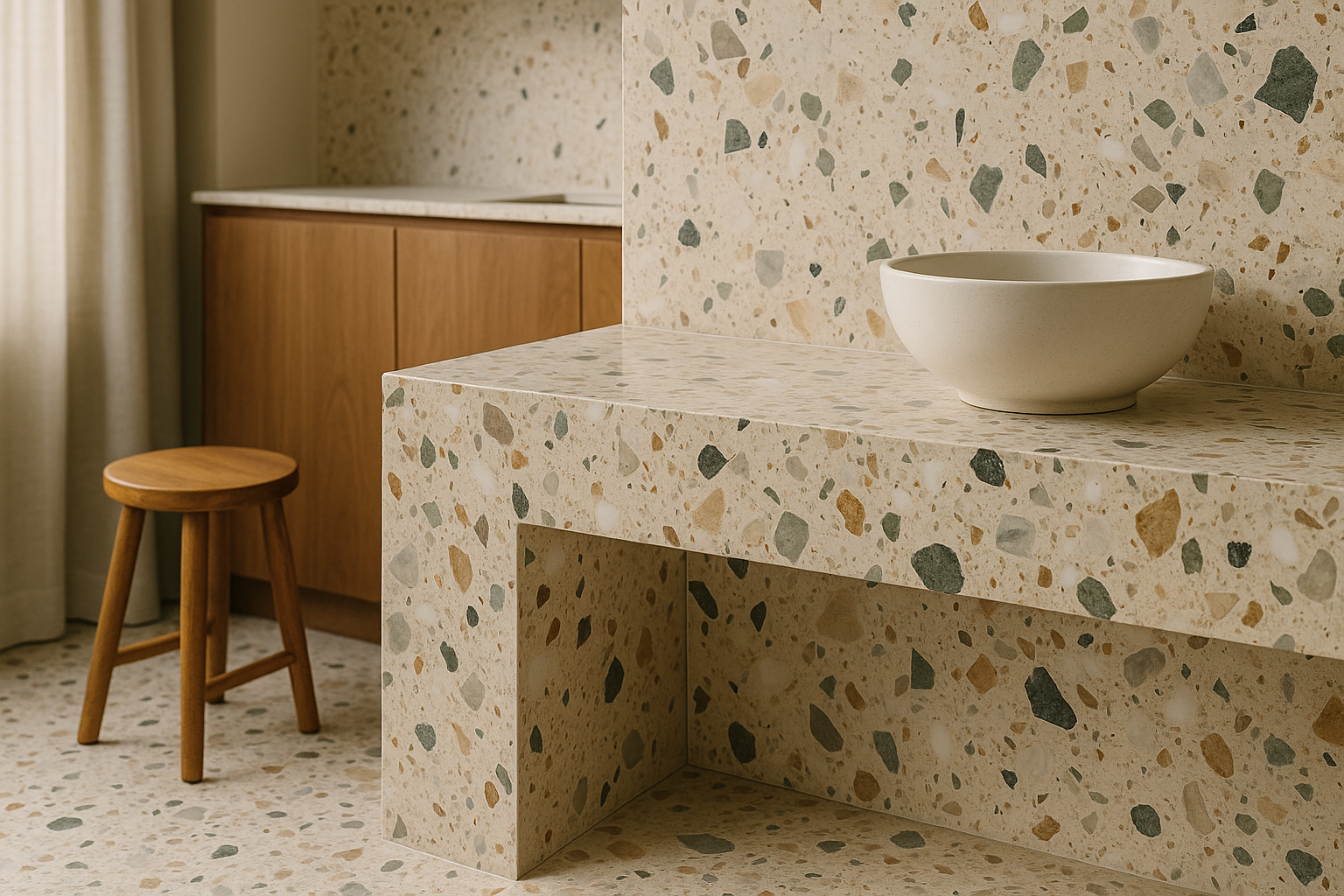Revival of Terrazzo in Modern Interior Design: A Nostalgic Journey
Introduction: Terrazzo, a vintage flooring material, has made a triumphant return to the interior design scene. This time, it's not just floors that Terrazzo is taking over, but also walls, countertops, and even furniture. Let's rediscover this forgotten gem and explore how it's making waves in the world of modern interior design.

The Rediscovery of Terrazzo
Terrazzo, a composite material made from chips of marble, glass, granite, and other suitable material embedded in cement, polished to a high sheen, was a popular flooring choice in the mid-20th century. This versatile and durable material fell out of favor in the latter half of the century, giving way to less expensive, more easily installable materials. However, the past few years have seen a revival of Terrazzo as designers and homeowners alike rediscover its unique aesthetics and sustainability.
Terrazzo in Contemporary Design
Modern design trends have seen a shift towards materials and finishes that offer uniqueness and character. Terrazzo, with its speckled, irregular patterns and vibrant colors, fits the bill perfectly. From Terrazzo-tiled walls in bathrooms and kitchens to Terrazzo countertops and furniture, this versatile material is making a bold statement in contemporary homes.
The Practicality of Terrazzo
Beyond its aesthetic appeal, Terrazzo offers practical benefits that make it an attractive choice for homeowners. Its durability and low maintenance requirements are well-suited for high-traffic areas such as kitchens and bathrooms. Moreover, due to its composite nature, Terrazzo can be customized to match any color scheme, making it a versatile choice for any design aesthetic.
Market Trends and Daily Living Enhancement
The resurgence of Terrazzo is reflected in market trends. From high-end designers to mainstream home improvement stores, Terrazzo is increasingly becoming a go-to choice for both residential and commercial properties. Not only does it enhance the visual appeal of living spaces, but its durability and easy maintenance make it an practical choice for daily living.
Research-Backed Claims
Research suggests that incorporating natural elements in interior design can positively affect well-being. Terrazzo, with its natural components and earthy tones, can help create a calming, grounded environment. Moreover, its longevity and low maintenance requirements offer economic benefits over the long term.
Conclusion
The revival of Terrazzo in modern interior design reflects a broader trend towards embracing unique, durable materials that offer both aesthetics and functionality. As we move forward, it will be interesting to see how this classic material continues to evolve and adapt to modern design needs.




